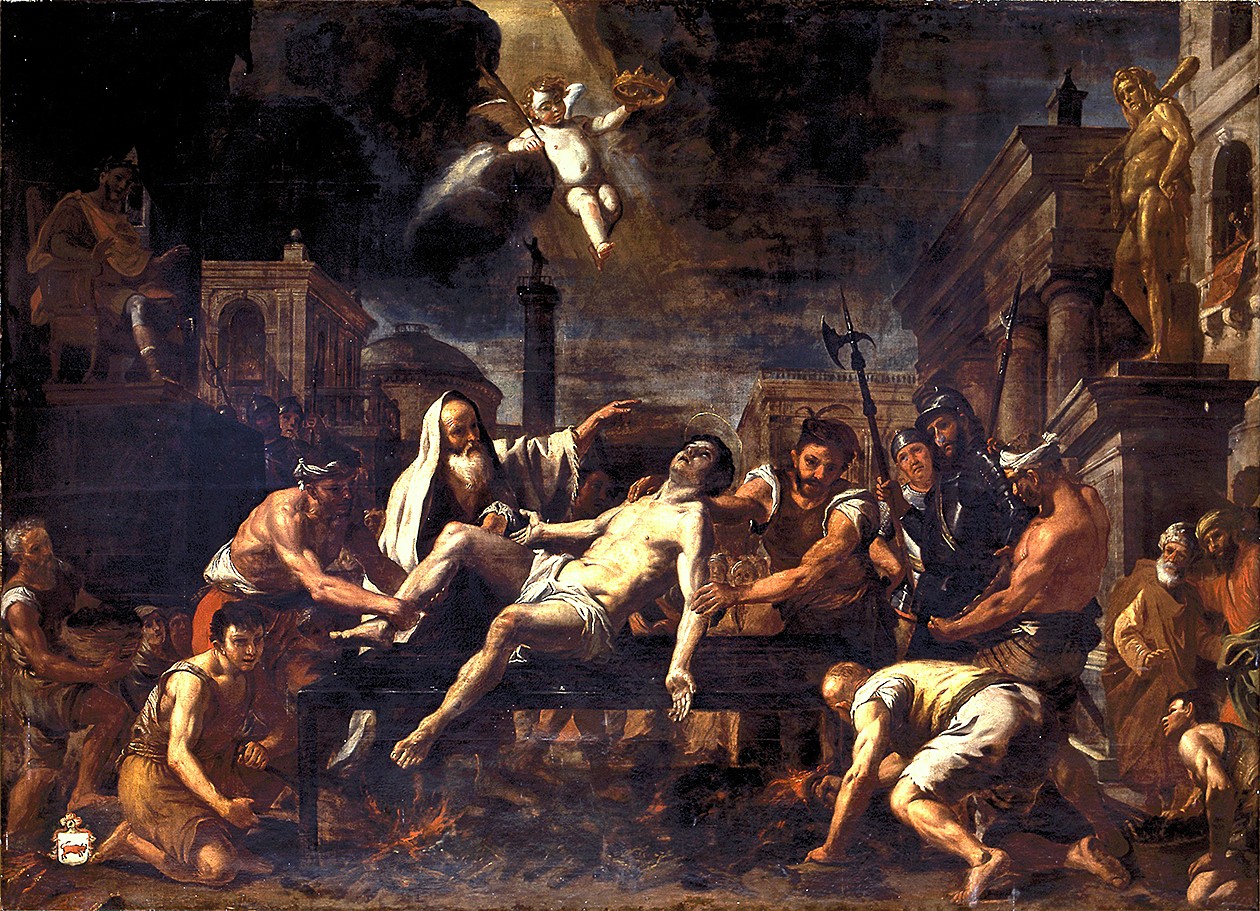
St Lawrence: the beauty that saves the world
First Reflection on the Titular Painting of the Collegiate Church of Saint Lawrence, Birgu
As the festive season is already in full swing, in the coming weeks we will turn our attention to the titular painting of the Collegiate Church of Saint Lawrence in Birgu—a masterpiece by Mattia Preti. This is the largest canvas he ever painted, and indeed the largest titular painting on our islands, measuring 5.79 meters wide and 4.02 meters high. Preti was around seventy-six years old at the time, so he certainly needed the help of his students and his workshop. Yet the master’s touch and his refined brushstrokes are evident in many parts, especially in the faces and in the figure of Saint Lawrence himself, who dominates the rather dark scene with his light—typical of the tenebrist style that marked the final phase of the artist’s career. Probably, this choice reflected his own life experience as an old man, who, like everyone else, looked back more often at his life and saw a mixture of light and darkness.
Perhaps the darkness weighs more heavily when we remember that judgment is near—but the true strokes of our one and only Master appear precisely in the delicate details even within the darkness, where they are not too visible, and also in the illuminated patches that turn our lives into a masterpiece—not a masterpiece of our own, but His masterpiece, the Artist par excellence.
As the Russian author and philosopher Dostoevsky says in his novel The Idiot, it is beauty that will save the world. A beauty that is not merely aesthetic—in fact, not primarily aesthetic—but the beauty of love, and above all, the beauty of Him who is the most beautiful among the children of men (see Psalm 45:3), Jesus Christ, whose naked and perfect beauty appears before us precisely on the cross. A beauty that redeems us and draws us to itself. A beauty that drew Saint Lawrence and took hold of him so completely that he too acquired that radiance—that shining beauty of those to whom the Kingdom of Heaven belongs, heirs of the earth because their hearts are meek like their Lord’s, and like Him, they had to pass through the cross (see Matthew 5:5, 10).
In the face of the interplay between darkness and light in our lives, while not ignoring any shadow or dark detail, may we too, together with the psalmist, be able to proclaim with faith and serenity before Divine Providence: “even the darkness is not dark to thee, the night is bright as the day; for darkness is as light with thee” (Psalm 139:12) .



